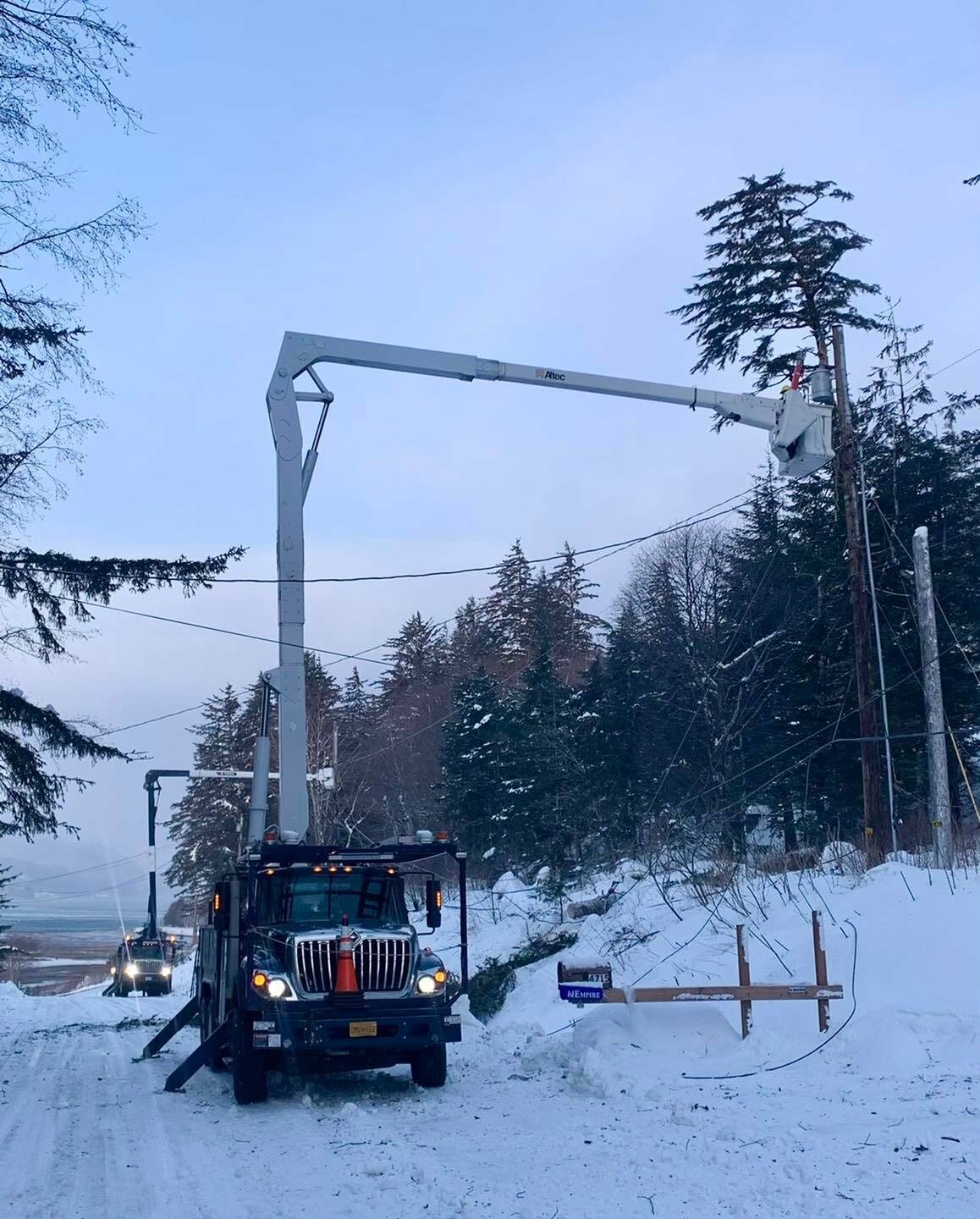Last year may have been exceptional for many things, but for power outages, it was right on the average, far down from 2020’s anomalously high number of outages.
2020 was a year of many outages, not just in Juneau where it hit the greatest frequency of outages recorded in nearly 20 years, but all over the country, said Alaska Electric Light and Power vice president and director of consumer affairs Debbie Driscoll in an email.
“The biggest impact to our outage hours in 2020 was severe weather, in particular, storm events that caused a great deal of ice to build up on trees downtown in a manner that is not typical for Juneau, along with high winds,” Driscoll said in an email. “This caused a large number of trees to come down through transmission lines, impacting all of town, and those repairs took a great deal of time to complete.”
2021 was a much more regular year, Driscoll said, falling within the average outage range of 45-65 outages per year. In contrast, 2020 had about four times as many events that lasted longer, upping the numbers. Cold weather, which creates many of the conditions that lead to outages, can also make it more difficult to repair damaged infrastructure, Driscoll said.
“Cold temps like we are experiencing now can make it more time consuming to respond to an outage, make repairs, and restore power,” Driscoll said. “We highly recommend people take precautions for an outage, like ensuring they have an outage kit prepared and a way to stay warm if the outage lasts longer than a couple of hours.”
Looking further afield, AEL&P keeps an eye on its line all around Juneau, including the transmission lines from Snettisham Hydroelectric Power Plant, using its own DaisyBell to help mitigate major avalanche risk.
“Our avalanche forecaster is continuously monitoring conditions to ensure mitigation work is done when appropriate/necessary,” Driscoll said.
While it is bitterly cold outside, Juneau’s homes are a barrier against the worst of the elements — as long as the power’s on. Without power, the temperature indoors will drop precipitously in this extraordinary cold.
Being prepared is an easy way to turn what could be a unpleasant time into less of an inconvenience, said Assistant Fire Chief Ed Quinto of Capital City Fire/Rescue. It’s especially relevant for areas like Thane, where an avalanche could cut off power and road access in one dramatic event.
“Make sure you have emergency rations for a few days,” Quinto said. “Be prepared. Have extra warm clothes. Be diligent. Make sure your faucets are running.”
Quinto praised AEL&P’s crews for how quickly they are usually able to restore power, but recommended that residents in outlying or more outage-prone areas such as out the road have supplies for about three days.
“If you’re in some of the outlying areas, be prepared for a couple days of having the power lines down,” Quinto said.
Emergency rations is any food that can be cooked without power, or can be cooked over a campfire or other portable stove. Quinto cautioned anyone cooking over one of these to do so outside to avoid buildup of harmful gasses indoors.
Simple foods to cook like canned goods or beans and rice are good choices for rations, Quinto said. Sandwiches are also a good choice. Quinto also reminded Juneau residents not to forget to hydrate — eight glasses of water is a good rule of thumb.
“What’s also important is making sure you’re up to date on your medicine,” Quinto said. “Make sure you have a charged cellphone.”
Having a generator can also be a help, Quinto said.
“My house is set up so if I lose power I can plug in a generator for certain appliances,” Quinto said.
• Contact reporter Michael S. Lockett at (757) 621-1197 or mlockett@juneauempire.com.

